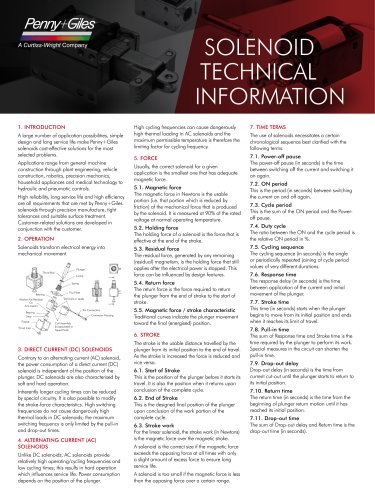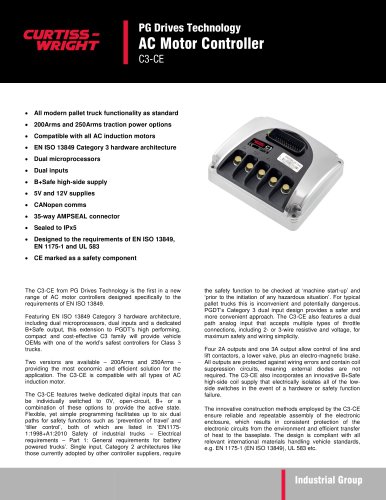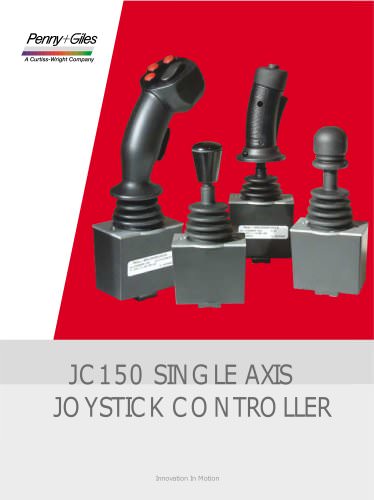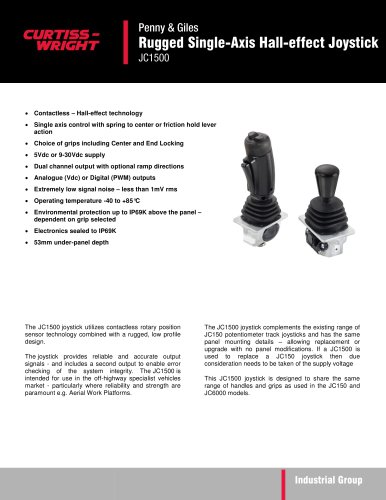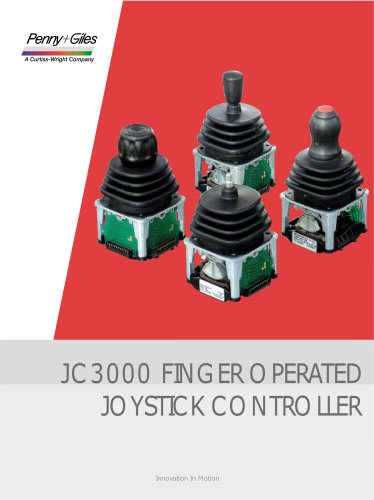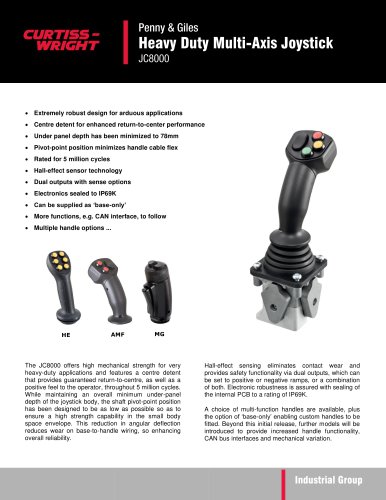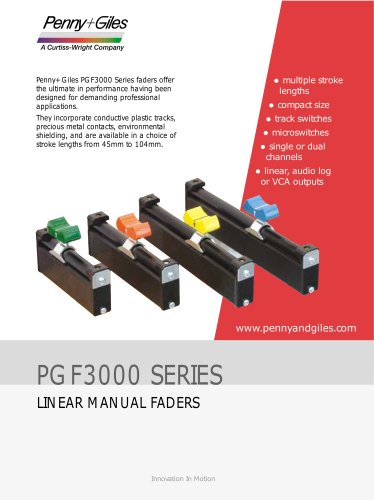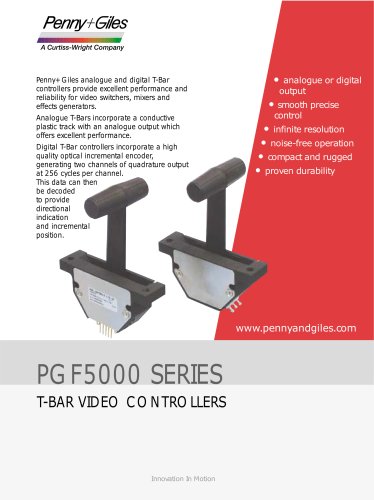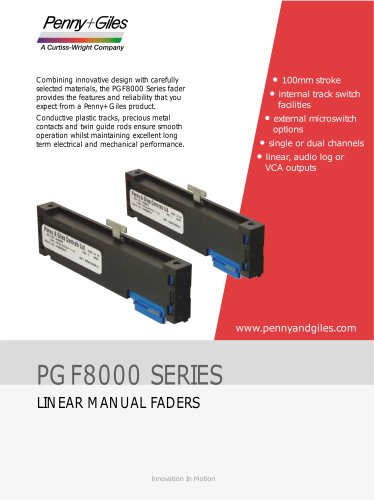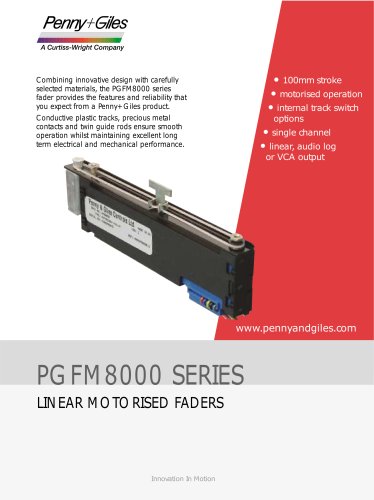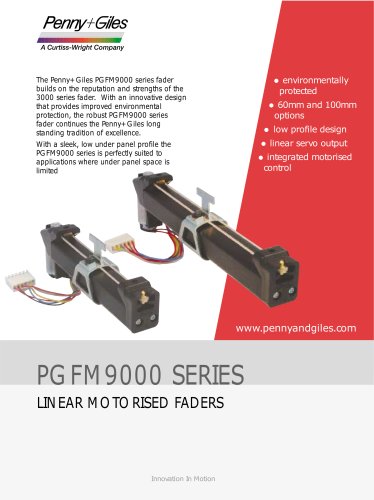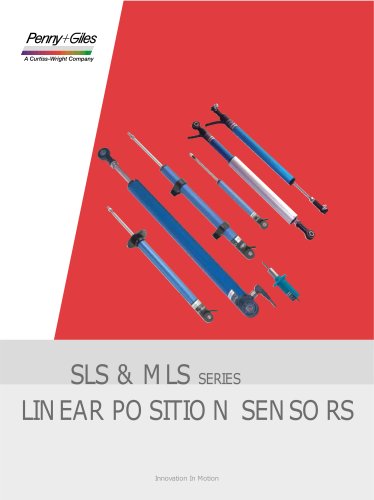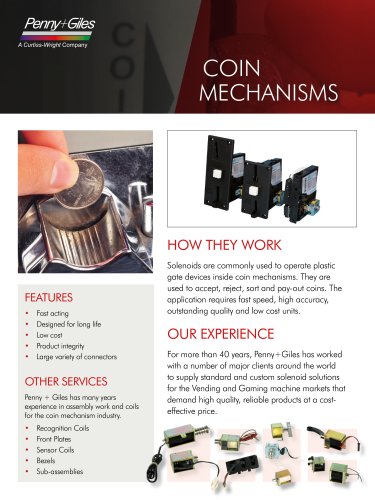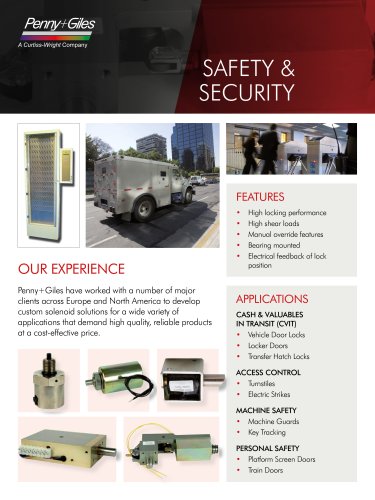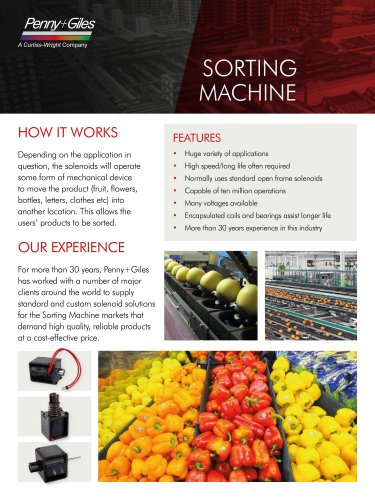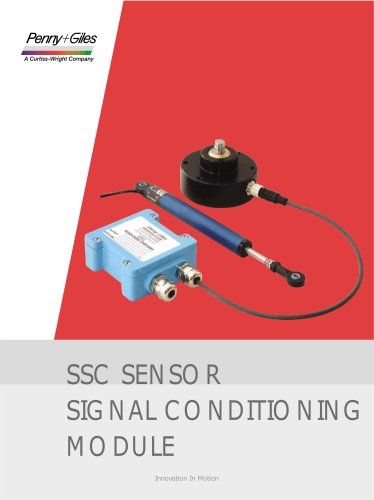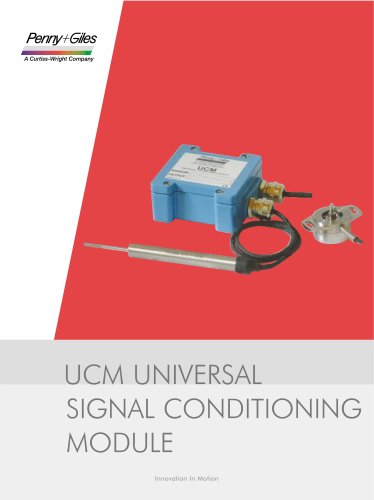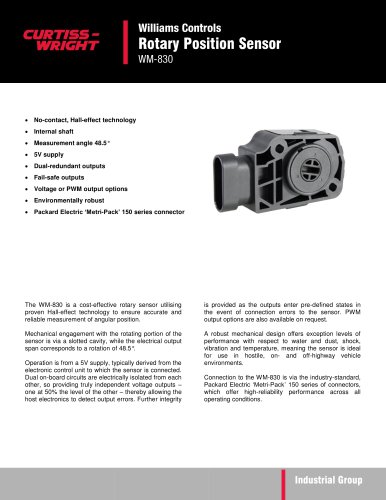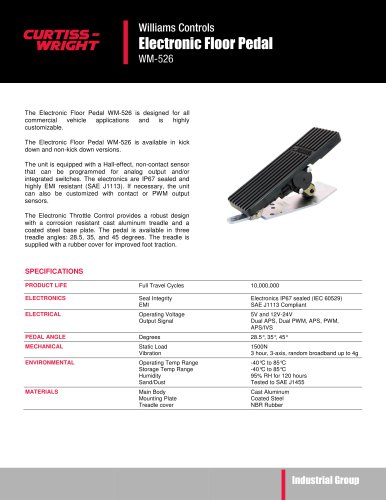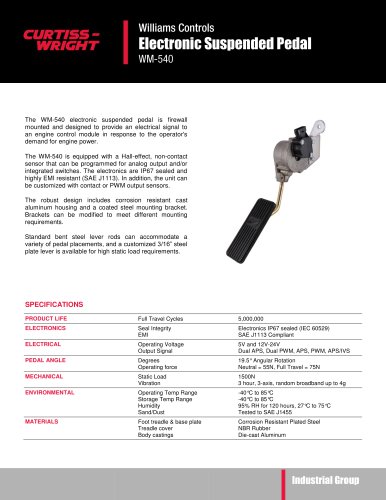Solenoid Technical Information0 pages
1. Introduction
A large number of application possibilities, simple
design and long service life make Penny+Giles
solenoids cost-effective solutions for the most
selected problems.
Applications range from general machine
construction through plant engineering, vehicle
construction, robotics, precision mechanics,
household appliances and medical technology to
hydraulic and pneumatic controls.
High reliability, long service life and high efficiency
are all requirements that are met by Penny+Giles
solenoids through precision manufacture, tight
tolerances and suitable surface treatment.
Customer-related solutions are developed in
conjunction with the customer.
2. Operation
Solenoids transform electrical energy into
mechanical movement.
3. Direct Current (DC) Solenoids
Contrary to an alternating current (AC) solenoid,
the power consumption of a direct current (DC)
solenoid is independent of the position of the
plunger. DC solenoids are also characterised by
soft and hard operation.
Inherently longer cycling times can be reduced
by special circuitry. It is also possible to modify
the stroke-force characteristics. High switching
frequencies do not cause dangerously high
thermal loads in DC solenoids; the maximum
switching frequency is only limited by the pull-in
and drop-out times.
4. Alternating Current (AC )
Solenoids
Unlike DC solenoids, AC solenoids provide
relatively high operating/cycling frequencies and
low cycling times; this results in hard operation
which influences service life. Power consumption
depends on the position of the plunger.
High cycling frequencies can cause dangerously
high thermal loading in AC solenoids and the
maximum permissible temperature is therefore the
limiting factor for cycling frequency.
5. Force
Usually, the correct solenoid for a given
application is the smallest one that has adequate
magnetic force.
5.1. Magnetic force
The magnetic force in Newtons is the usable
portion (i.e. that portion which is reduced by
friction) of the mechanical force that is produced
by the solenoid. It is measured at 90% of the rated
voltage at normal operating temperature.
5.2. Holding force
The holding force of a solenoid is the force that is
effective at the end of the stroke.
5.3. Residual force
The residual force, generated by any remaining
(residual) magnetism, is the holding force that still
applies after the electrical power is stopped. This
force can be influenced by design features.
5.4. Return force
The return force is the force required to return
the plunger from the end of stroke to the start of
stroke.
5.5. Magnetic force / stroke characteristic
Traditional curves indicate the plunger movement
toward the final (energised) position.
6. Stroke
The stroke is the usable distance travelled by the
plunger from its initial position to the end of travel.
As the stroke is increased the force is reduced and
vice versa.
6.1. Start of Stroke
This is the position of the plunger before it starts its
travel. It is also the position when it returns upon
conclusion of the complete cycle.
6.2. End of Stroke
This is the designed final position of the plunger
upon conclusion of the work portion of the
complete cycle.
6.3. Stroke work
For the linear solenoid, the stroke work (in Newtons)
is the magnetic force over the magnetic stroke.
A solenoid is the correct size if the magnetic force
exceeds the opposing force at all times with only
a slight amount of excess force to ensure long
service life.
A solenoid is too small if the magnetic force is less
than the opposing force over a certain range.
7. Time terms
The use of solenoids necessitates a certain
chronological sequence best clarified with the
following terms:
7.1. Power-off pause
The power-off pause (in seconds) is the time
between switching off the current and switching it
on again.
7.2. ON period
This is the period (in seconds) between switching
the current on and off again.
7.3. Cycle period
This is the sum of the ON period and the Poweroff
pause.
7.4. Duty cycle
The ratio between the ON and the cycle period is
the relative ON period in %.
7.5. Cycling sequence
The cycling sequence (in seconds) is the single
or periodically repeated joining of cycle period
values of very different durations.
7.6. Response time
The response delay (in seconds) is the time
between application of the current and initial
movement of the plunger.
7.7. Stroke time
This time (in seconds) starts when the plunger
begins to move from its initial position and ends
when it reaches its limit of travel.
7.8. Pull-in time
The sum of Response time and Stroke time is the
time required by the plunger to perform its work.
Special measures in the circuit can shorten the
pull-in time.
7.9. Drop-out delay
Drop-out delay (in seconds) is the time from
current cut-out until the plunger starts to return to
its initial position.
7.10. Return time
The return time (in seconds) is the time from the
beginning of plunger return motion until it has
reached its initial position.
7.11. Drop-out time
The sum of Drop-out delay and Return time is the
drop-out time (in seconds).
Thrust Rod
Bearing
Plunger
Circlip
Spring
Flux Plate
Terminals or Leads
Bearing
Pin Connectors
Connector Housing
Coil Assembly
Encapsulated or
Taped Finish
Frame
Stop
Thrust Cap
Washer Anti Residual
Or
Anti Impact
Solenoid
Technical
Information

 عضویت
عضویت  ورود اعضا
ورود اعضا راهنمای خرید
راهنمای خرید







